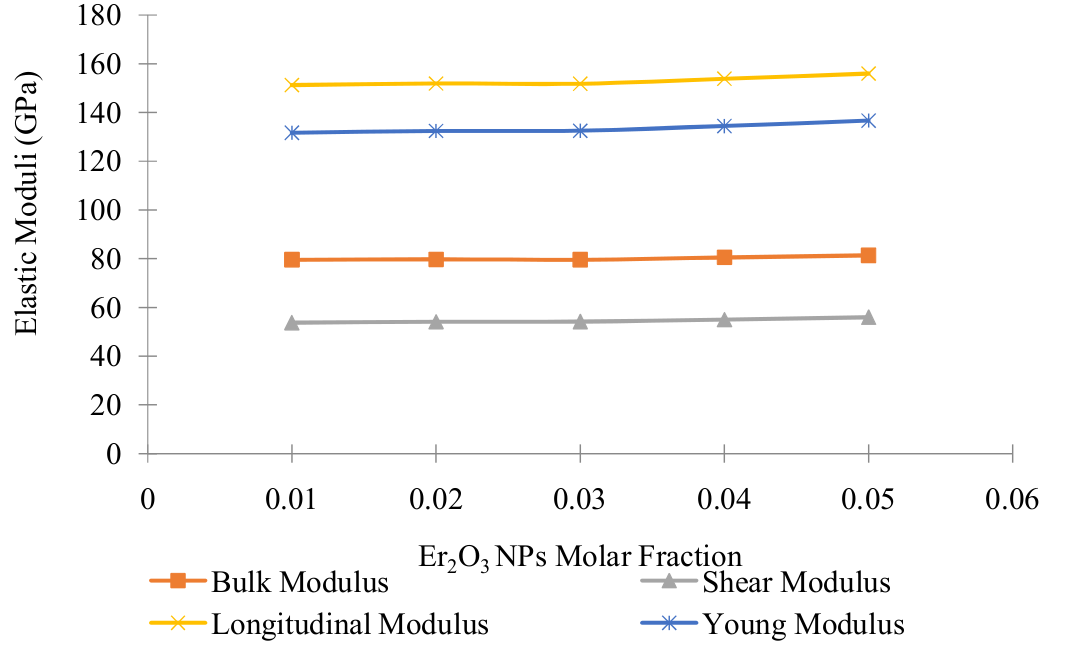Investigations of the Elastic Moduli of Er2O3 NPs Doped TeO2 – B2O3 – SiO2 Glasses using Theoretical Models
Keywords:
Erbium oxide, Tellurite Glass, Elastic Moduli, Poisson Ratio, Theoretical ModelsAbstract
Elastic moduli of {[(TeO2)0.7 (B2O3)0.3]0.8 (SiO2)0.2}1-y (Er2O3 NPs)y glasses with y = 0.01, 0.02, 0.03, 0.04, 0.05 were studied in this work using the theoretical elastic models. The Makishima & Mackenzie, Rocherulle and bond compression models were employed for the study. In the Makishima and Mackenzie model, the packing density was calculated from the bulk glass molar weight and the bulk glass density whereas in Rocherulle model it is determined as the individual oxides. Young, shear and bulk moduli as well as the Poisson ratio were calculated for the glasses in the Makishima and Rocherulle models, while longitudinal, was calculated in addition to young, bulk and shear moduli using the bond compression model. Bond per unit volume number (nb), bulk modulus, bulk modulus ratio (Kbc/Ke), atomic ring size (?) and stretching force constant were also calculated and presented. The values of the Young, bulk and shear moduli obtained from Makishima model increased from 52.854 to 55.335 GPa, 35.754 to 39.862 GPa and 21.080 to 21.809 GPa respectively with Er2O3 NPs composition increase from 1% to 5%.. The Rocherulle model presented increasing values for Young, bulk and shear moduli as 56.910 to 58.432 GPa, 41.452 to 44.450 GPa and 22.385 to 22.809 GPa respectively with Er2O3 NPs composition increase from 1% to 5%. The bond compression model presented much higher values of the elastic moduli compared to the experimentally obtained values and showed an increasing trend as the Er2O3 NPs concentration increases. In the glass network, the atomic ring size value decreased from 0.5698 to 0.5091 nm indicating an increase in the close packing of atoms. Based on the elastic moduli values presented by all the models, Makishima and Mackenzie model presented a more reliable data and hence represents the best model for the studied glass system.

Published
How to Cite
Issue
Section
Copyright (c) 2022 Journal of the Nigerian Society of Physical Sciences

This work is licensed under a Creative Commons Attribution 4.0 International License.







